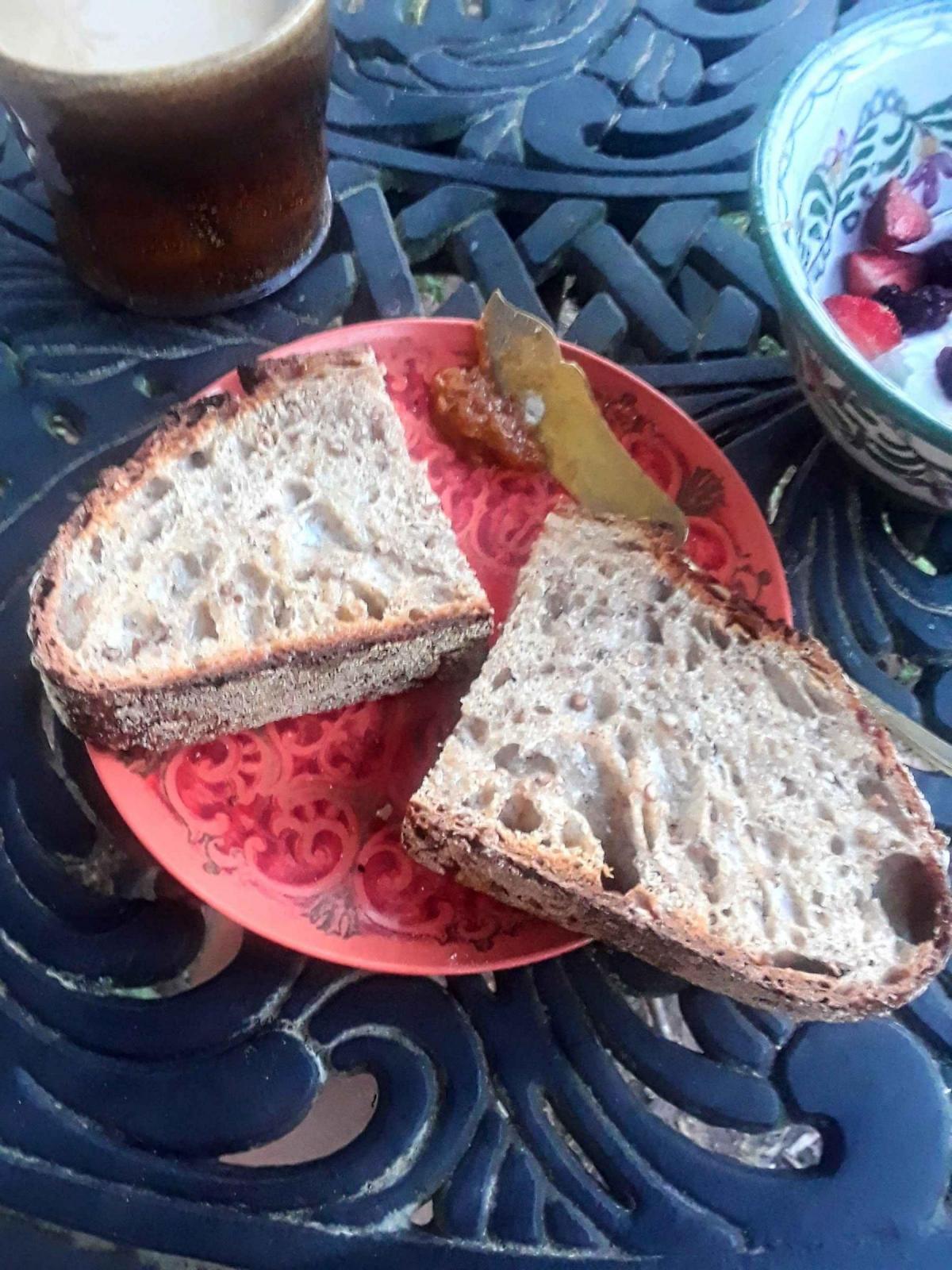Once more at the Tartine-style porridge/soaked grain type loaves, this time featuring buckwheat groats soaked in whey.
Bread spec.s:
Central Milling bread flour- 360g (60%)
Dayspring Farm Whole Wheat Flour- 180g (30%)
unspecified Einkorn (home milled by Jessica & James)- 60g (10%)
----------
leaven- ~55g
water- 400g
Salt- ~4tsp
----------
unspecified Buckwheat groats (100g) soaked in whey (200g) excess strained off (~35%)
-----------
Process:
-Soak groats in whey day (room temp. which fluctuated between ~60-~80) and a half before (no specific here, just going for a getting the groats nice and tender and maybe a bit of natural fermentation
-Mix water and leaven, mix in flours, autolyse 1.5 hrs. (room temp.= ~ 80)
-add salt, pinch in, stretch and fold over 3 hrs.
-add in buckwheat groats after 1.5 hrs. of bulk fermentation
-continue bulk fermentation undisturbed overnight in root storage (temp = 60)
-pre-shape, shape, retard 14 hrs. in fridge
-bake 20 min @ "500" covered, 10 @ "500" uncovered, 35 @ "470" uncovered
*Took the oven temp when it was set to 500 and got a reading around 435, kinda jumping around. It's probably a bit higher than that, but it seems the oven runs at least 50 low, which is unfortunate because that means that it is actually topping out around 450 and maybe a little lower. Historically I've had best results with "as hot as possible" perhaps 525 (if that oven was accurate. It certainly felt hot)
Reflections:
I really like the shape and bloom of the loaf coming out of the oven. I was pretty happy with the crumb too. Initially upon cutting open the loaf, I thought it looked a little inconsistent, but further cuts seemed more satisfying.
Flavor is nice and rich and a bit bitter. This Dayspring Farm whole wheat (Turkey Catawba Hard Red I believe) definitely brings a strong, somewhat bitter flavor. The flavor came through more rich and mellow in this loaf than the previous. Maybe the einkorn adding something. I'm not sure if I can really comment on the flavor of the buckwheat. On that note, I'm not sure I'm I'll do buckwheat again- even softened from soaking, the groats are like little sharp diamond that lacerate the dough. Also I'm still dreaming of that sweet, rich barley flavor of a few loaves back.
